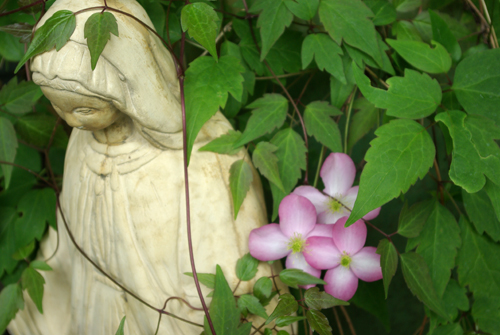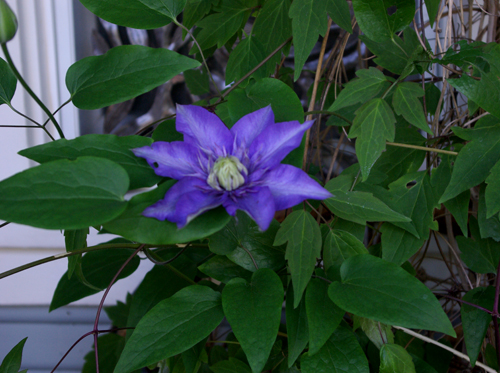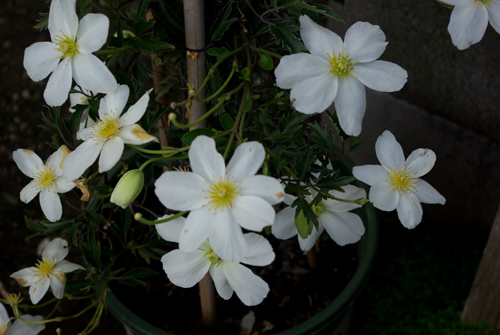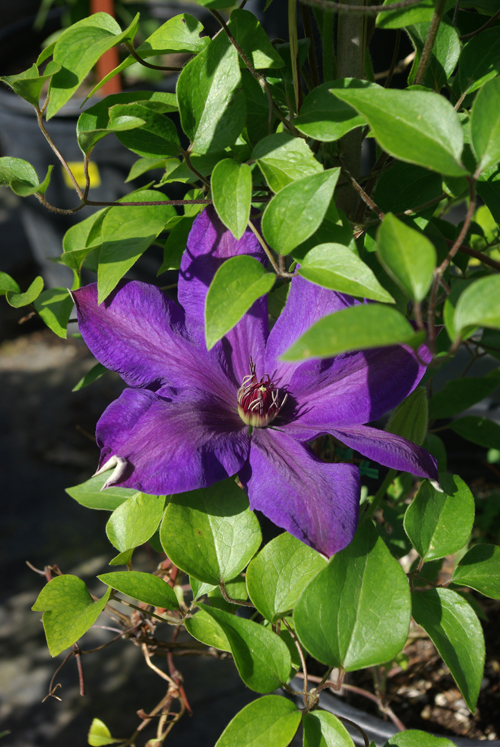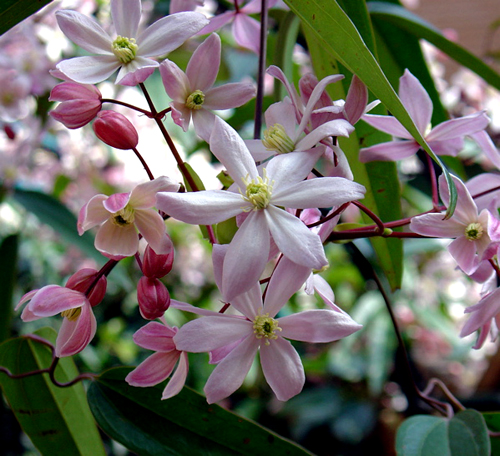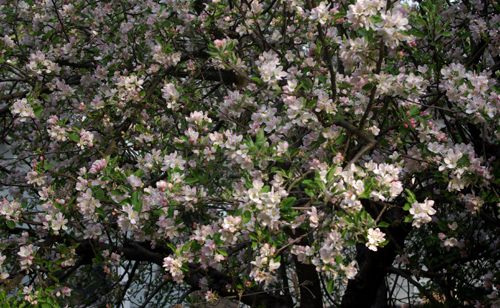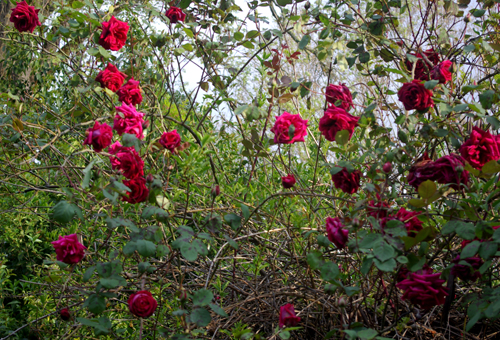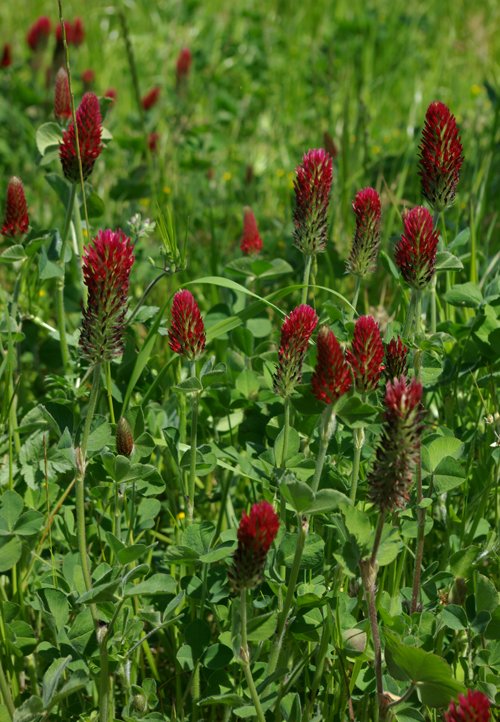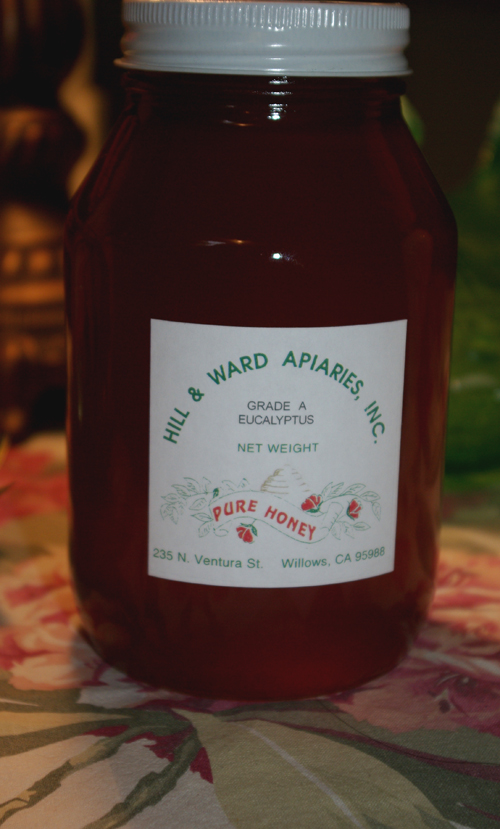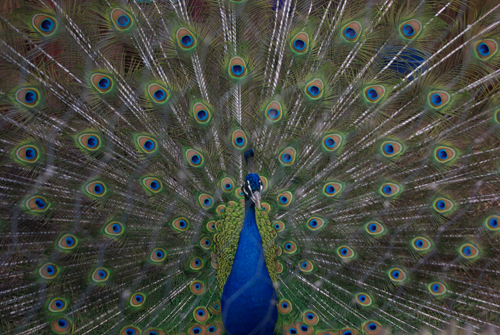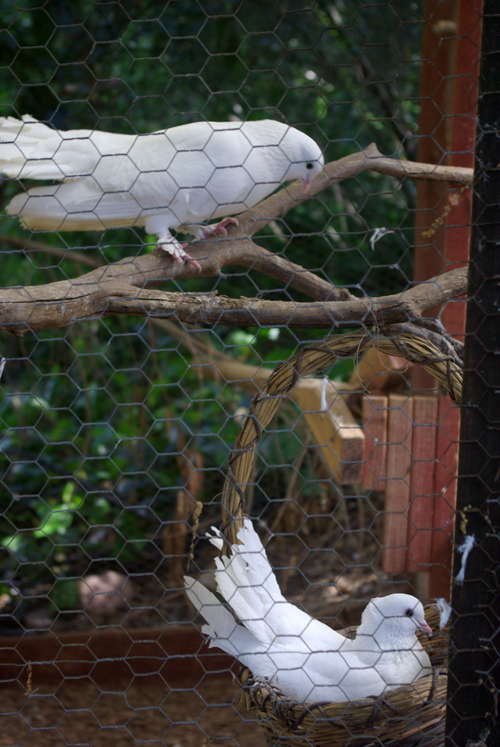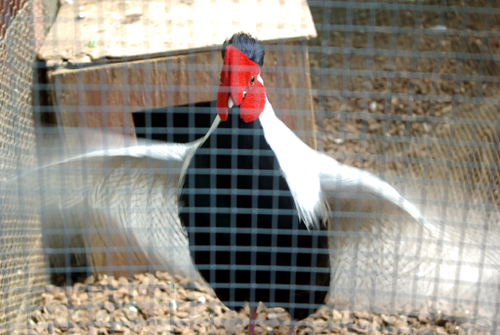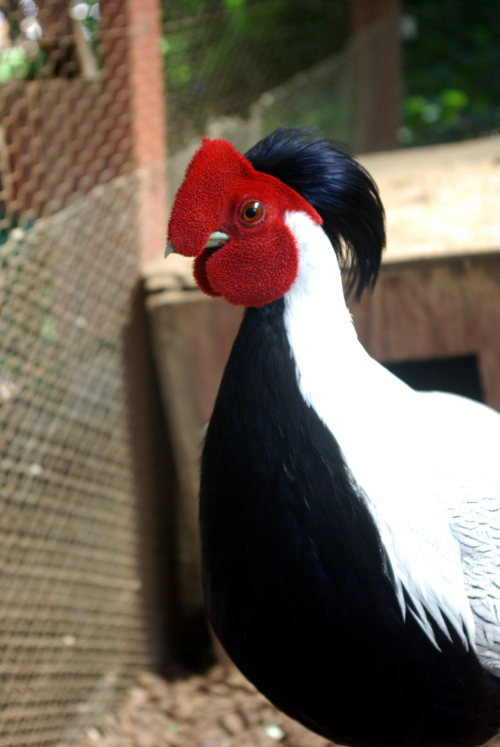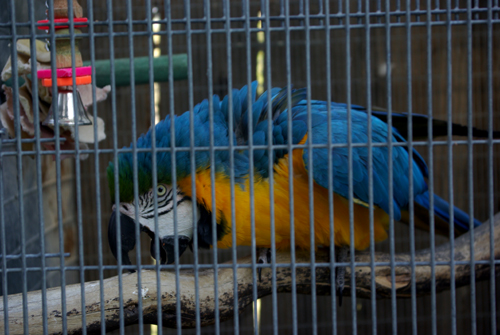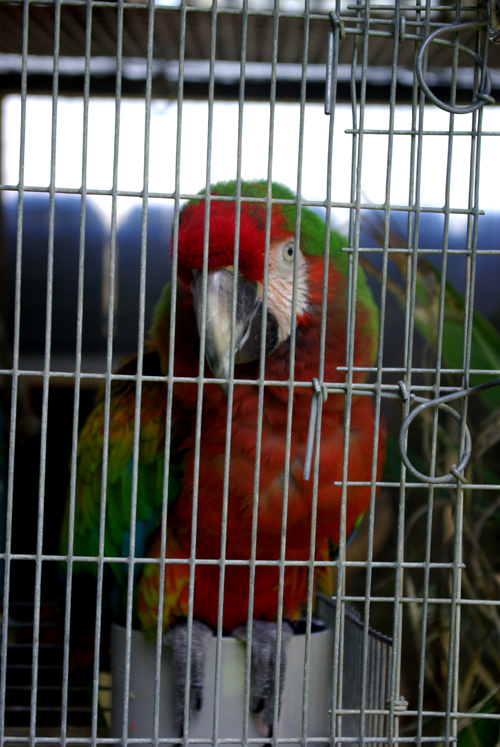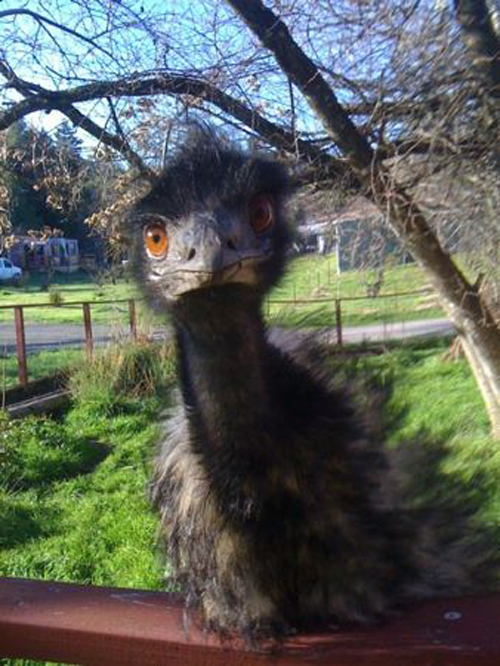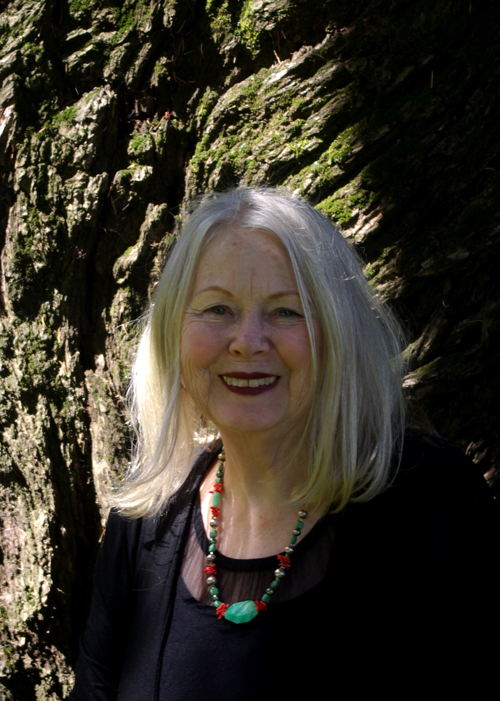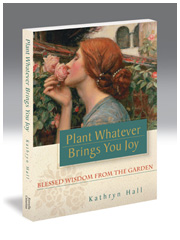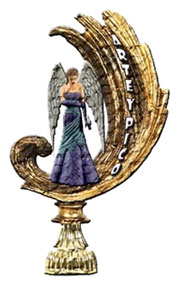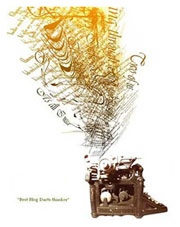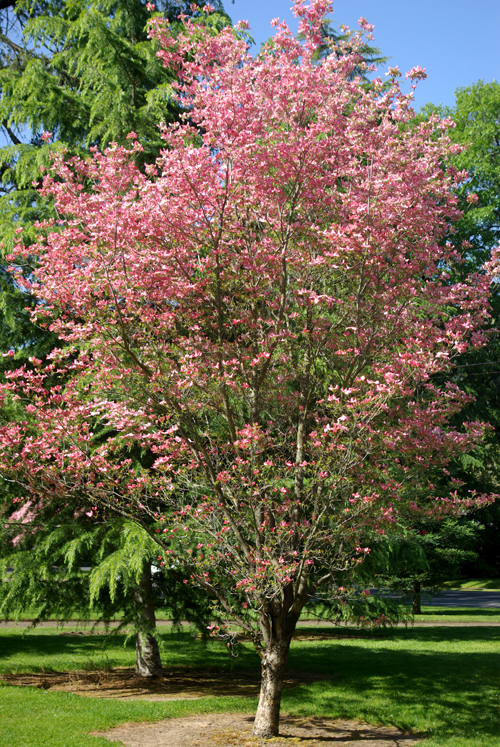
Cornus florida
“The best time to plant a tree is 20 years ago. The second best time is now.” ~Chinese proverb
It’s April and flowering trees abound at this time of year in California, and most likely where you live, too. They emerge in concert harmony, showcasing one after another. At this particular moment it is the dogwood that is in full display, and last year I highlighted their abundance and beauty here.
However while it may be dogwood that is taking the larger stage, there are many more flowering trees about and I set out to find them. What I least expected to find was a western redbud, as they have largely come and gone, but redbud I did find, and I was delighted! My guess is this late bloomer will be the last of the season. Lucky us for its last minute arrival! For whatever reasons, this tree (and variations) is associated with Judas’s supposed hanging himself and is known in parts of the world as the “Judas Tree.” It has a very interesting property in that its blossoms emerge directly from its branches, contributing to a rather unlikely look as it unfolds. I love their little heart-shaped leaves. It’s rather endearing that carpenter bees cut nickel-size circles from the redbud leaves to use in their nests. (I adore carpenter bees. I think of them as the grand teddy bears of the bee family, kind of lumbering and harmless to humans.)

Cercis occidentalis
Scouting about I find myself drawn to a small tree of which I’d been previously aware, but had not closely examined before. It is a Japanese snowball tree.
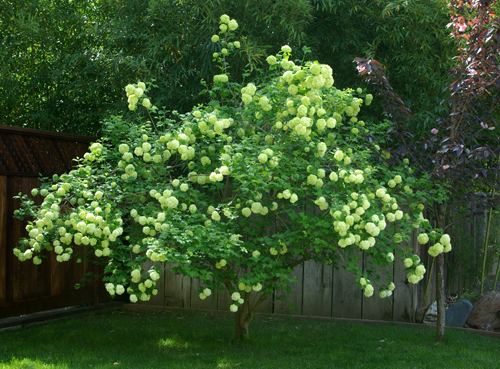
Snowball Viburnum
This tree has always puzzled me as my interpretation of it is that it is some sort of hydrangea that has gone rogue and far exceeded its boundaries and expected form! You will see what I mean, here:
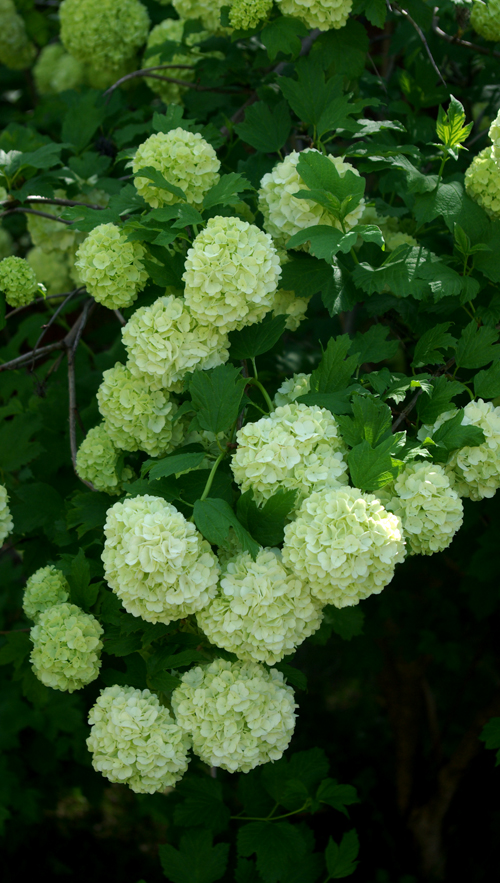
See? Most perplexing. But the snowball tree it is and lives happily in this dappled corner, protected by a wall of bamboo. Very lovely setting.
The most dramatic flowering trees I found were these photinia twins living entwined in a small charming county park. They must have been carefully groomed in their early years and I’m imagining are very very old to have reached this height.

Closer to home is a reliable white lilac in full blossom. I love that people walking by always stop to partake of its wonderfully sweet fragrance!
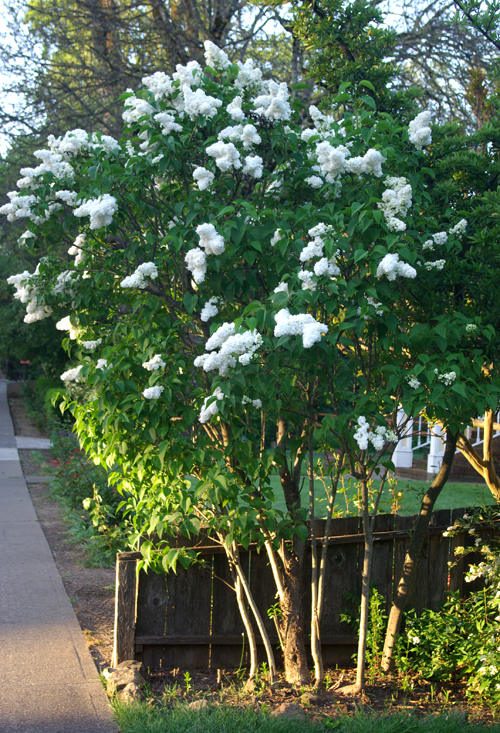
And now a mystery tree, which, ironically, inspired me to want to write this very post.
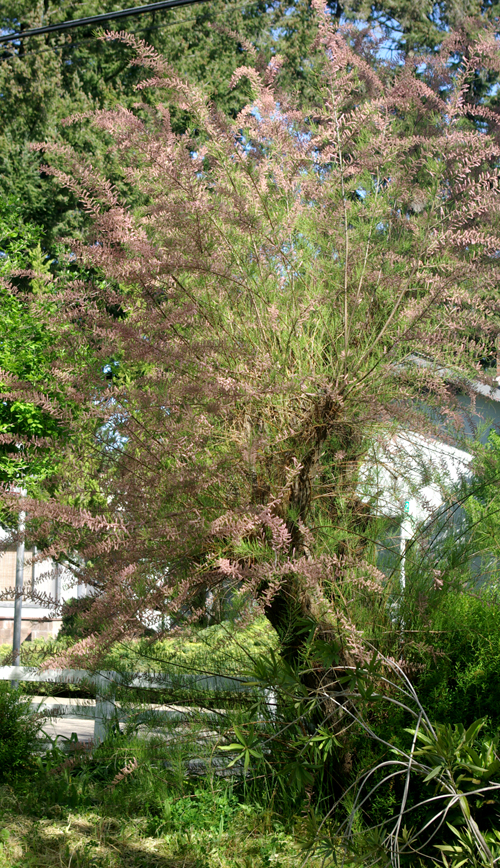
I must confess that at point of inspiration the plumes on this tree were slightly more lavender and my delay in acting on my muse has placed it slightly past its most beauteous moment. However, it is still quite lovely. It does not have leaves, per se, but rather a lacey kind of needle. Its gnarled trunk suggests its presence in the neighborhood for quite some time. Any ideas?? All guesses appreciated!
Love and springtime blessings!
Kathryn xoox
Footnote: If you want an answer, ask a scientist! Cousin Julie has ID’d the above plant as a tamarix. Poor thing is invasive in some parts, and has the ability to suck up groundwater from the desert floor. Good for the tree. Not so good for the desert.
What is interesting to me about the above post is that three of the trees I’ve chosen apparently have Biblical references. The dogwood, as you may know, has associations with the crown of thorns placed on Jesus’s head before his crucification. As noted above, the redbud is associated with Judas’s hanging. And I have just found these surprising notes in verifying that Julie’s ID was correct:
In spite of Tamarisks drawbacks, its an important desert tree, providing windbreaks and welcome shade and cover for many animals. It is the source of the Manna of the Bible, which is produced by a small sap sucking insect that turns the toxic sap into a sweet honey like substance that drops to the ground. It is still gathered in the Middle East and sold in the markets.
A fascinating unfolding!
Posted on April 25th, 2010 by Kathryn
Filed under: Plants | 18 Comments »

